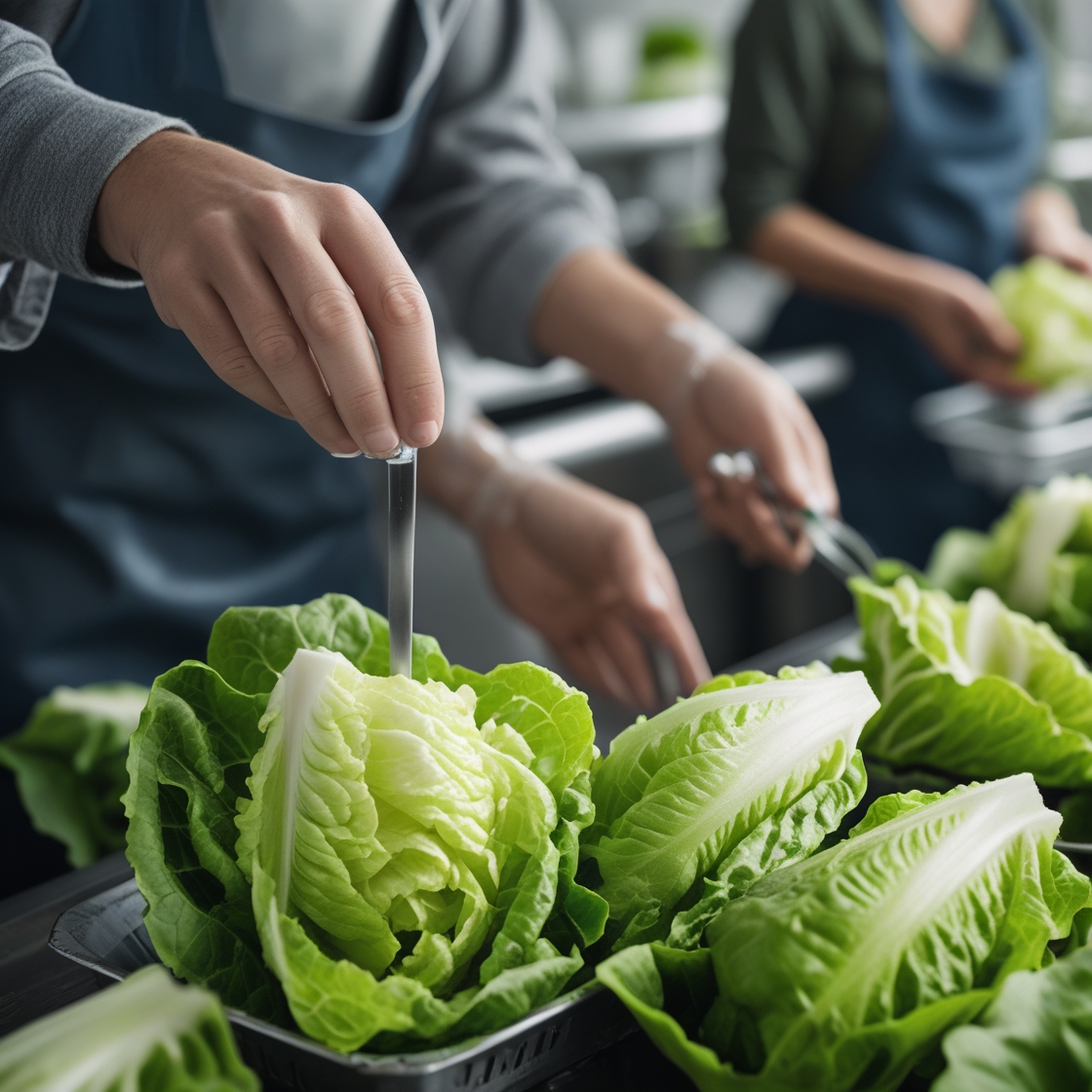In recent news, the E. Coli outbreak linked to romaine lettuce has caused concern among consumers and health officials alike. Understanding the dynamics of this outbreak is crucial in order to take necessary precautions and mitigate risks. In this article, we will delve into the details of the situation, including how E. Coli spreads through contaminated produce, the potential impact on public health, and most importantly, what you need to know to protect yourself and your loved ones. Stay informed and educated on this pressing issue by reading further into our comprehensive coverage of the romaine lettuce E. Coli outbreak.
The source of the outbreak: where did it all begin?
The Source of the Outbreak: Where Did it All Begin?
- The Romaine Lettuce E. Coli outbreak originated in California.
- Specifically, the outbreak was traced back to lettuce harvested from the Central Coastal growing regions.
- Contaminated irrigation water is believed to be the primary source of the E. Coli bacteria that infected the lettuce.
The outbreak spread rapidly due to distribution across multiple states and countries, leading to widespread concern and illness among consumers. It is crucial for authorities to investigate and address these issues promptly to prevent similar outbreaks in the future.
Overall, understanding where the outbreak began helps pinpoint potential areas for improvement in food safety regulations and practices within the agricultural industry. By identifying and addressing these root causes, we can work towards preventing such public health crises from occurring again in our food supply chain.
Symptoms of E Coli infection: what to look out for
- Severe stomach cramps: One of the most common symptoms of an E. coli infection is severe stomach cramps that can range from moderate to excruciating.
- Diarrhea: Watery or bloody diarrhea may occur within a few days after becoming infected with E. coli. It is important to stay hydrated if experiencing prolonged diarrhea.
- Nausea and vomiting: Many individuals with an E. coli infection experience nausea, which can sometimes be accompanied by vomiting. If these symptoms persist, seek medical attention promptly.
If you are experiencing any of these symptoms after consuming romaine lettuce or suspected contaminated food items, it is essential to consult a healthcare professional for evaluation and potential treatment. Early detection and management of E. coli infections can prevent complications and promote a quicker recovery process.
The role of contaminated produce in spreading E Coli
The Role of Contaminated Produce in Spreading E Coli
Contaminated produce, such as romaine lettuce, can play a significant role in spreading E. coli outbreaks. When fruits and vegetables are grown or processed in unhygienic conditions, they can easily become contaminated with harmful bacteria. This contamination can occur at any stage of the food production process, from the farm to the packing facility to the grocery store.
Consumers who eat contaminated produce are at risk of contracting E. coli infections, which can lead to serious health complications. It is crucial for both producers and consumers to take proper precautions when handling and consuming fresh fruits and vegetables to prevent further outbreaks. By practicing good hygiene, washing all produce thoroughly before consumption, and staying informed about food safety guidelines, individuals can help reduce the risk of E. coli contamination from contaminated produce.
High-risk groups: who is most vulnerable to E Coli
High-risk groups: who is most vulnerable to E. Coli
- Children under 5 years old, elderly individuals over 65, and individuals with weakened immune systems are at a higher risk of developing severe symptoms from an E. Coli infection.
- Pregnant women should also exercise caution as they can experience more serious complications if infected with E. Coli bacteria.
- Those with chronic illnesses such as diabetes, kidney disease, or cancer are more susceptible to E. Coli infections due to their compromised immune systems.
Taking precautions
- To protect themselves from E. Coli contamination, high-risk individuals should avoid consuming romaine lettuce until authorities give the all-clear signal.
- It’s crucial for caregivers of young children and older adults to be vigilant about food safety practices to prevent any potential exposure to harmful bacteria.
- Seeking medical attention promptly if experiencing symptoms like severe stomach cramps, diarrhea, or vomiting is essential for high-risk groups when dealing with possible E. Coli infection.
How to properly wash and handle romaine lettuce
How to Properly Wash and Handle Romaine Lettuce
- Wash Thoroughly: Start by rinsing the romaine lettuce under cold running water. Use your hands to gently rub each leaf to remove any dirt or debris that may be clinging to the surface.
- Separate Leaves: After washing, separate the leaves of romaine lettuce carefully. Inspect each leaf for any signs of wilting or discoloration, and discard any damaged portions.
- Store Safely: Store washed and dried romaine lettuce in a clean container with a lid in the refrigerator. Make sure it is away from raw meat or poultry to prevent cross-contamination.
By following these simple steps, you can enjoy safe and delicious romaine lettuce without worrying about potential contamination.
The importance of cooking romaine lettuce during outbreaks
The Importance of Cooking Romaine Lettuce During Outbreaks
- Kills Bacteria: Cooking romaine lettuce can effectively kill harmful bacteria like E. coli, reducing the risk of foodborne illnesses.
- Ensures Safety: Heating romaine lettuce to a certain temperature destroys any pathogens present, making it safer to consume during outbreaks.
- Prevents Spread: By cooking romaine lettuce, you help prevent the potential spread of bacteria to others who may come into contact with contaminated produce.
In conclusion, during an E. coli outbreak linked to romaine lettuce consumption, it is crucial to cook the vegetable thoroughly before consuming it. This simple step can significantly reduce the chances of falling ill due to contaminated produce and protect both yourself and those around you from potential harm. Stay informed about food safety guidelines during outbreaks and take necessary precautions when handling and preparing potentially affected foods like romaine lettuce.
Updates on the current status of the outbreak
Current Status of the Outbreak
- Magnitude: The Romaine Lettuce E. Coli outbreak has affected multiple states across the United States, with confirmed cases steadily rising.
- Investigation: Health officials are working diligently to pinpoint the exact source of contamination, focusing on farms and distribution centers.
- Precautionary Measures: In light of this outbreak, consumers are advised to avoid consuming any romaine lettuce until further notice to prevent potential illness and minimize risks of exposure to E. Coli bacteria till the situation is resolved efficiently.
Steps to take if you suspect you have been exposed to contaminated romaine lettuce
Steps to Take if You Suspect Exposure
If you believe you may have consumed contaminated romaine lettuce, it is crucial to take immediate action to protect your health and prevent the spread of E. coli infection. Here are the steps you should follow:
- Monitor Symptoms: Be vigilant for symptoms such as stomach cramps, diarrhea, vomiting, and fever which could indicate an E. coli infection.
- Seek Medical Attention: If you experience any of these symptoms after consuming romaine lettuce or suspect exposure, contact your healthcare provider immediately for guidance on testing and treatment.
- Report Illness: It is essential to inform local health authorities about your illness so they can investigate further and prevent potential outbreaks.
Taking quick and decisive action can help in early detection and containment of E. coli contamination linked to romaine lettuce consumption, ensuring timely medical intervention if necessary.
Additional Precautionary Measures
In addition to seeking medical help if needed, consider implementing the following precautionary measures:
- Practice Good Hygiene: Wash hands thoroughly with soap before handling food and regularly during food preparation.
- Avoid Romaine Lettuce Consumption: Err on the side of caution by avoiding romaine lettuce until the source of contamination has been identified and resolved.
- Stay Informed: Keep abreast of updates from local public health agencies regarding the status of the outbreak in your area for accurate information on recommended actions.§
By being proactive in monitoring symptoms, seeking medical advice promptly when needed, and taking preventive measures like practicing good hygiene habits, individuals can minimize their risk associated with potential exposure to contaminated romaine lettuce during a possible E. coli outbreak.§


